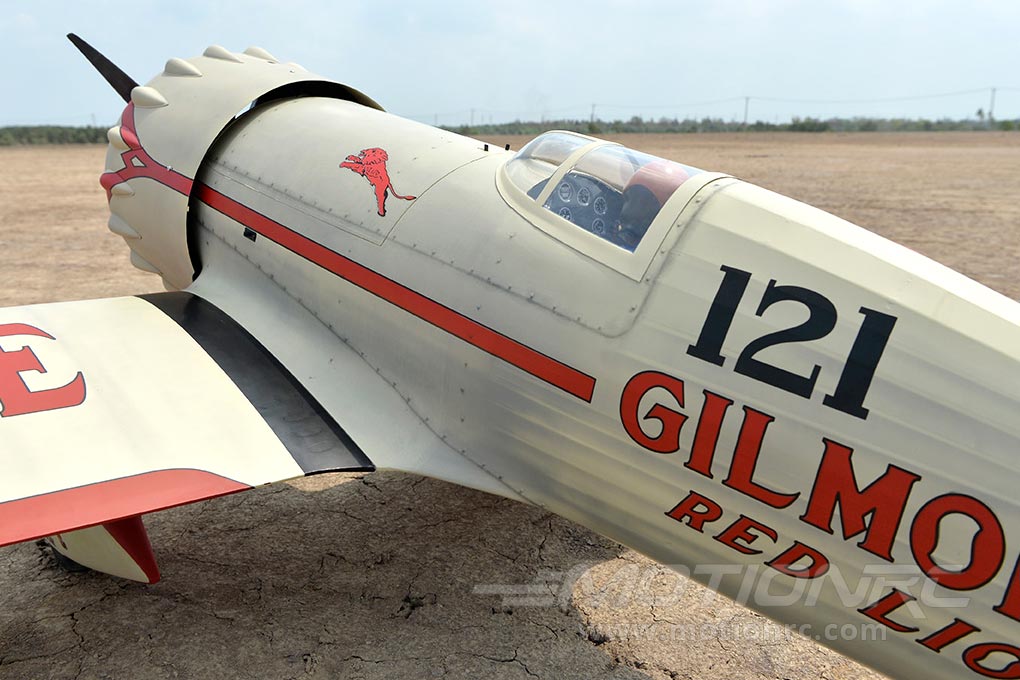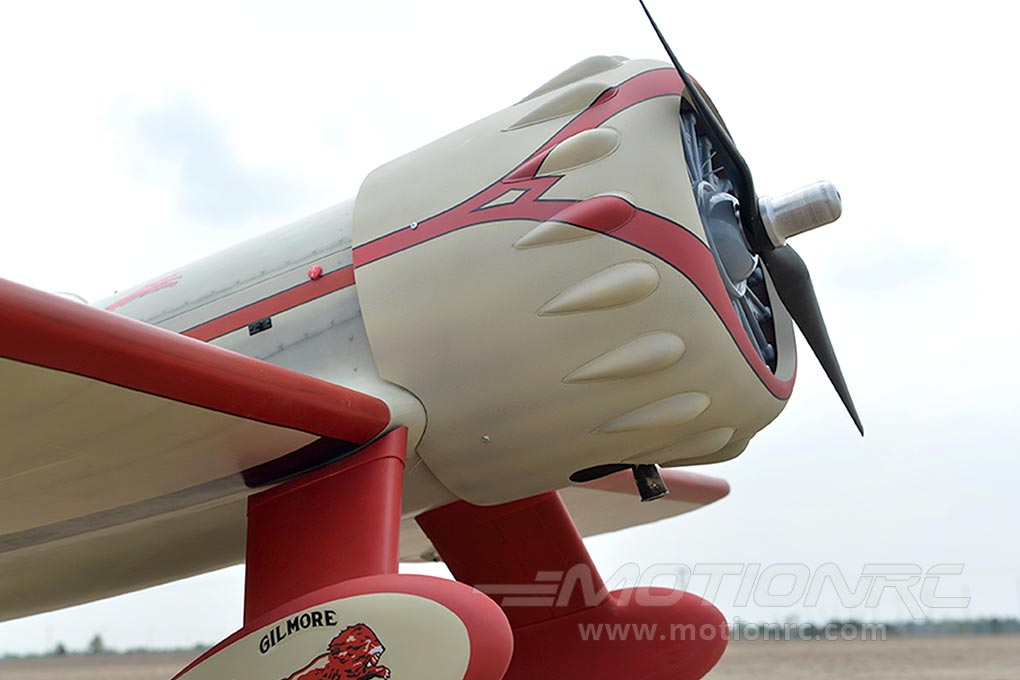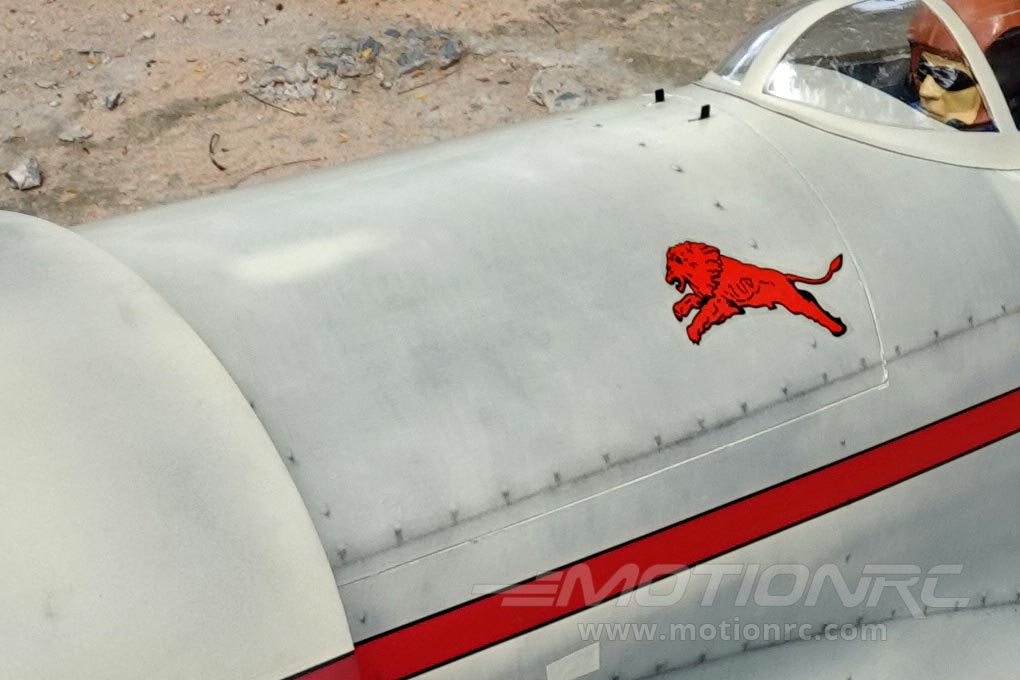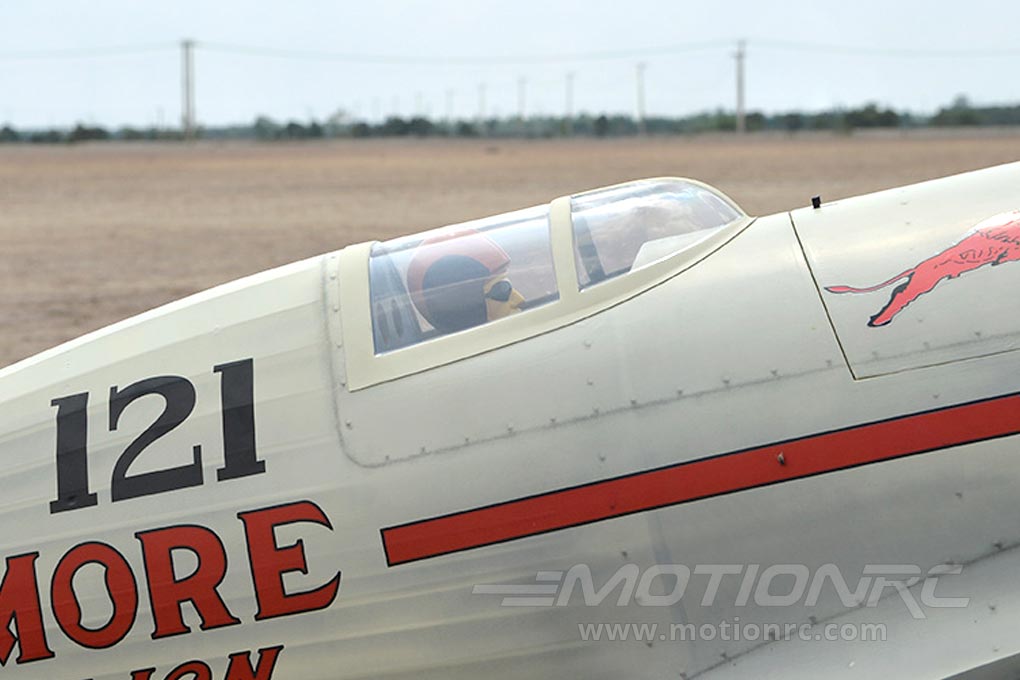Gilmore 2350mm (92.5") Wingspan from Black Horse - Balsa Wood ARF - BHM1003-001
Roscoe Turner was the preeminent aerial showman of the 1930s, and perhaps of all time. From 1929 to 1930, Turner set numerous cross-country speed records and won many air races. To raise publicity while he was flying for the Gilmore Oil Company in the early 1930s, Turner adopted a lion cub and flew with him until he became too large. A lion’s head was the logo for the Gilmore Oil Company, and Turner named the cub Gilmore. Turner retired from air racing in 1939, but continued to be involved in aviation until his death, which, unlike for so many early aviators, was from natural causes.
The model is scaled to approximately 1:5 and attention was paid to a true to original appearance and best flight characteristics. The model can be operated using an electric power system or with an internal combustion engine about 60cc displacement.
 |
Classic Racing Livery The racing scheme is a tip of the cap to the golden era when barnstorming was a house-hold term. |
| Factory Weathered Printing The printing on this model has a realistic weathering complete with rivet and panel line detail that elevates the model to a whole new level of scale appeal. The "faded" weathering is subtle and accentuates the fully sheeted areas and the ribbed areas of the fuselage nicely, flowing with the contours of each shape. Because this weathering is silk-screen printed onto every model, it always matches, in case you needed to buy a spare wing after a crash. |
 |
 |
Fiberglass Molded Cowl Exceptional quality fiberglass molded cowl really adds to the realism and scale appeal. Very subtle shading and meticulous pin-striping really accentuates the classic lines of this aircraft. |
| Gas or Electric Power for this ~1/3 scale Racer! You can choose between gas or electric to power your model depending on your preference. The huge frontal area makes installations of either powerplants very easy. |
 |
 |
Large Electronics Hatch There is ample room for your various electronics, batteries, gyros or anything you desire to complete your electrical system. The Gilmore Red Lion has a cavernous fuselage, so space is not a concern! |
| Scale Racing Canopy The canopy has the scale outline and look of the original from the 1930's. Even the pilot looks like he's reaching for the finish line! |
 |
- High level of prefabrication right out of the box
- ~1/3.4 scale
- Lightweight, strong, laser cut balsa and plywood construction
- Classic racing scheme with subtle pre-printed shading
- Panel lines and details printed directly onto the pre-applied, high quality covering
- Aerofoiled tail surfaces
- Recessed hinges on all control surfaces
- Pre-drilled hinge mounting holes
- Heavy-duty pin hinges on all control surfaces
- Large easy access fuel tank/battery/servo access hatches with sprung loaded latches
- Painted and detailed cockpit, pilot and interior included
- Fiberglass control horns with ball link connector
- comprehensive control and fitting accessories included
- Two-piece, plug-in wings simplify transportation and assembly
- Fiberglass cowl and glass reinforced landing gear covers/pants
- Mounts for both electric and gas power options included








 I don't know if your're a detective for Nancy Grace, but my other one is actually 80" wingspan powered by a Gemini 300 twin. No more nitro fuel or glow plugs for me, thx.
I don't know if your're a detective for Nancy Grace, but my other one is actually 80" wingspan powered by a Gemini 300 twin. No more nitro fuel or glow plugs for me, thx.

Comment